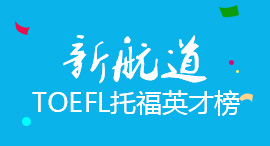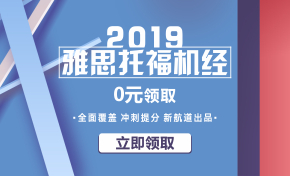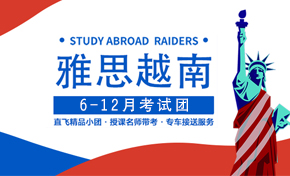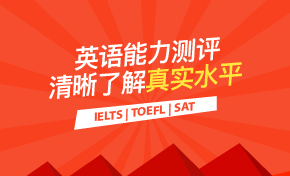托福阅读考试文章抢先练练看
2012年12月27日 12:00
供稿单位:互联网 责编:本站编辑 浏览: 0 次
供稿单位:互联网 责编:本站编辑 浏览: 0 次
如果你还不清楚自己的托福阅读水平处在什么样的位置,不妨做一做这篇托福考试文章练练手吧,也顺便检...

如果你还不清楚自己的托福阅读水平处在什么样的位置,不妨做一做这篇托福考试文章练练手吧,也顺便检测一下你的托福阅读水平,找到了自己的位置,发现自己的不足,才能对症下药,重点突破哈。
标题:
Sumer and the First Cities of the Ancient Near East
正文:
The earliest of the city states of the ancient Near East appeared at the southern end of the Mesopotamian plain, the area between the Tigris and Euphrates rivers in what is now Iraq. It was here that the civilization known as Sumer emerged in its earliest form in the fifth millennium. At first sight, the plain did not appear to be a likely home for a civilization. There were few natural resources, no timber, stone, or metals. Rainfall was limited, and what water there was rushed across the plain in the annual flood of melted snow. As the plain fell only 20 meters in 500 kilometers, the beds of the rivers shifted constantly. It was this that made the organization of irrigation, particularly the building of canals to channel and preserve the water, essential. Once this was done and the silt carried down by the rivers was planted, the rewards were rich: four to five times what rain-fed earth would produce. It was these conditions that allowed an elite to emerge, probably as an organizing class, and to sustain itself through the control of surplus crops.
It is difficult to isolate the factors that led to the next development—the emergence of urban settlements. The earliest, that of Eridu, about 4500 B.C.E., and Uruk, a thousand years later, center on impressive temple complexes built of mud brick. In some way, the elite had associated themselves with the power of the gods. Uruk, for instance, had two patron gods—Anu, the god of the sky and sovereign of all other gods, and inanna, a goddess of love and war—and there were others, patrons of different cities. Human beings were at their mercy. The biblical story of the Flood may originate in Sumer. In the earliest version, the gods destroy the human race because its clamor had been so disturbing to them.
It used to be believed that before 3000 B.C.E. the political and economic life of the cities was centered on their temples, but it now seems probable that the cities had secular rulers from earliest times. Within the city lived administrators, craftspeople, and merchants. (Trading was important, as so many raw materials, the semiprecious stones for the decoration of the temples, timbers for roofs, and all metals, had to be imported.) An increasingly sophisticated system of administration led in about 3300 B.C.E. to the appearance of writing. The earliest script was based on logograms, with a symbol being used to express a whole word. The logograms were incised on damp clay tablets with a stylus with a wedge shape at its end. (The Romans called the shape cuneus and this gives the script its name of cuneiform.) Two thousand logograms have been recorded from these early centuries of writing. A more economical approach was to use a sign to express not a whole word but a single syllable. (To take an example: the Sumerian word for" head" was "sag." Whenever a word including a syllable in which the sound "sag" was to be written, the sign for "sag" could be used to express that syllable with the remaining syllables of the word expressed by other signs.) By 2300 B.C.E. the number of signs required had been reduced to 600, and the range of words that could be expressed had widened. Texts dealing with economic matters predominated, as they always had done; but at this point works of theology, g literature, history, and law also appeared.
Other innovations of the late fourth millennium include the wheel, probably developed first as a more efficient way of making pottery and then transferred to transport. A tablet engraved about 3000 B.C.E. provides the earliest known example from Sumer, a roofed boxlike sledge mounted on four solid wheels. A major development was the discovery, again about 3000 B.C.E., that if copper, which had been known in Mesopotamia since about 3500 B.C.E., was mixed with tin, a much harder metal, bronze, would result. Although copper and stone tools continued to be used, bronze was far more successful in creating sharp edges that could be used as anything from saws and scythes to weapons. The period from 3000 to 1000 B.C.E., when the use of bronze became I widespread, is normally referred to as the Bronze Age.
问题:
1、Which of the following is NOT mentioned in paragraph 1 as a disadvantage of the Mesopotamian plain?
There was not very much rainfall for most of the year.
Melting snow caused flooding every year.
The silt deposited by rivers damaged crops.
Timber, stone and metals were not readily available.
2、According to paragraph 1, which of the following made it possible for an elite to emerge?
New crops were developed that were better suited to conditions on the Mesopotamian plain.
The richest individuals managed to gain control of the most valuable cropland.
Control over the few available natural resources made some people four to five times richer than everyone else.
The building of canals to increase agricultural output required organization.
3、The word "sustain" in the passage is closest in meaning to
defend
promote
maintain
transform
4、According to paragraph 2, Eridu and Uruk are examples of urban settlements that
lacked the features usually found in other early urban settlements f
developed around religious buildings
grew much more rapidly than most of the urban settlements found in Sumer
were mysteriously destroyed and abandoned
5、The word "sovereign" in the passage is closest in meaning to
counselor
master
defender
creator
6、According to paragraph 3, which of the following led to the appearance of writing?
An increasingly sophisticated administrative system
Coordination between secular and religious leaders
The large volume of trade, particularly imports
A rapidly expanding and changing population Paragraph 3 is marked with
7、In paragraph 3, why does the author provide the information that the number of signs in use had dropped from 2,000 to 600 by 2300 B.C.E.?
To argue that the development of writing involved periods of growth followed by periods of decline
To demonstrate that earlier written texts used a larger vocabulary than later texts, which were aimed at a broader audience
To support the claim that the range of words expressed by logograms varied widely depending on time period and type of text
To provide evidence for the increased efficiency of using signs to express syllables rather than whole words
8、According to paragraph 3, ancient texts most commonly dealt with
theology
literature
economics
law
9、According to paragraph 4, the earliest wheels probably
were first developed in areas outside Mesopotamia
were used to make pottery
appeared on boxlike sledges
were used to transport goods between cities
10、The word "engraved* in the passage is closest in meaning to
carved
produced
dated
discovered
11、Which of the sentences below best expresses the essential information in the highlighted sentence in the passage? Incorrect choices change the meaning in important ways or leave out essential information.
Also around 3000 B.C.E., it was discovered that mixing copper, known from about 3500 B.C.E., with tin would create a much harder metal known as bronze.
Although copper had been known since 3500 B.C.E in Mesopotamia, the discovery of bronze did not occur until around 3000 B.C.E.
Another major development around 3000 B.C.E. was the discovery that copper could be mixed with a much harder metal known as tin.
The development of bronze by mixing copper and tin probably occurred around 3000 B.C.E. but may have happened as early as 3500 B.C.E.
12、The word "widespread" in the passage is closest in meaning to
obvious
significant
necessary
common
希望大家自己先做一做,然后再对照答案来看,点击查看答案
推荐阅读:
成都新航道英语培训学校开设:雅思培训、托福培训、英语口语培训、个性化1对5,1对1学习、剑桥青少英语。

热门文章
- 托福100分是什么水平?考多少分才能出...01/23
- 2021年托福考试时间表(全年)!10/14
- 托福改革后阅读题型分布是怎样?备考需...08/30
- 六级500分的英语水平,托福是多少分?01/25
- ETS官方托福在家考解读:关于托福在家...05/07
- 如何通过听写提高托福听力“辨音“能力?05/03
- 托福听力:那些困扰你的美式英语03/26
- 托福听力:容易误解的听力词组集锦03/20
- 托福听力九大出错高频区及解决方法(下)03/19
- 托福听力九大出错高频区及解决方法(中)03/19
- 发誓英语该怎么表达?03/04
- contrary是什么意思?附详细介绍!02/28
- 成都口语托福培训班哪个好?选择的标准...09/05
- 托福口语Task 3 解题技巧及高分模板05/07
- 托福口语TASK6三步拿高分(下)05/03
- 2021年3月托福阅读考情分析,备考的同...04/09
- 托福阅读:小指代里的大乾坤05/23
- 2018年4月托福阅读词汇题考前速递来啦!04/11
- 托福阅读备考干货 实施结构化阅读(下)04/05
- 托福阅读备考干货 实施结构化阅读(中)04/05


















